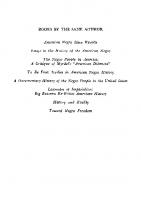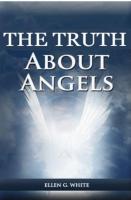Ardoyne: The Untold Truth 1900960176, 9781900960175
286 27 41MB
English Pages 558 [564] Year 2003
Recommend Papers

- Author / Uploaded
- Ardoyne Commemoration Project
File loading please wait...
Citation preview
ae \| ) ey V21314\0 THE UNTOLD TRUTH
-Ardoyne Commemoration Project
Digitized by the Internet Archive In 2022 with funding from Kahle/Austin Foundation
https://archive.org/details/ardoyneuntoldtruO000unse
ARDOYNE: aa.
THE UNTOLD TRUTH
Ardoyne Commemoration Project
First published 2002
by Beyond the Pale
BTP Publications Ltd Unit 2.1.2 Conway Mill 5-7 Conway Street Belfast BT13 2DE
Tel: +44 (0)28 90 438630 Fax: +44 (0)28 90 439707 E-mail: office @btpale.ie Website: http://www.btpale.ie Copyright © 2002 Ardoyne Commemoration Project The moral right of the Ardoyne Commemoration Project to be identified as the author of this work
has been asserted in accordance with the Copyright, Designs and Patent Act, 1988. All rights reserved. No part of this work may be reproduced in any form or by any means, electronic or mechanical, including photocopy, without written permission from the publisher. British Library Cataloguing-in-Publication Data.
A catalogue record for this book is available from the British Library.
Paperback ISBN 1-900960-17-6
Hardback ISBN 1-900960-18-4
Printed in Dublin by Colour Books Ltd. Cover Photos: Pacemaker (front), Andersonstown News (back).
CONTENTS
Acknowledgements
List of those killed
Vil
Preface
Introduction
1. 1969-70 ‘Ardoyne will not burn...’
iy
2. 1971-73 ‘Hot and heavy’: The War Begins
43
3. 1974-76 “Murder Mile’: Truces and Terror Campaigns
197
4. 1976-84 ‘The Long War’: Containment, Criminalisation and Resistance
285
5. 1985-94 Counter-insurgency, Collusion and the Search for Peace: From the Anglo-Irish Agreement to the Ceasefires
387
6. 1994-2002 To the Good Friday Agreement and Beyond
497
7. Conclusion
D27
Select bibliography
543
Dedication To all those who contributed to the book and who have since died:
Jimmy Barrett Rose Craig Tom Largey Mickey Lagan Patrick McBride Agnes Mulvenna Bobby Reid Rose-Ann Stitt
Acknowledgements Ardoyne Commemoration Project Committee Tom Holland (Chairperson, co-editor and interviewer) Patricia Lundy (co-editor, co-author and interviewer)
Mark McGovern (co-editor, co-author and interviewer)
Phil McTaggart (interviewer and treasurer) Kelley McTaggart (transcribing) Helen McLarnon (transcribing)
Additional help and support was provided by: Mary Brady, Mickey Liggett, Ann Stewart, Geraldine Brown, Barry McCafferty, Mark Thompson, Jim Gibney, Sean Mag Uidhir, Maria Williams, Margaret McClenaghan, Kate Lagan, Claire Hackett, Mairead Gilmartin, Jacqueline Monahan, Dolores Hughes, Marie Murphy, Sam McLarnon, Uschi Grandel, Mike Tomlinson, Agnieszka Martynowicz and Bill Rolston.
The ACP would also like to thank the following groups and organisations: The Joseph Rowntree Charitable Trust, Belfast Regeneration Office (North Team), Northern Ireland Voluntary Trust, Community Relations Council, The Lottery Charities Board, The Hans Bloeckler Foundation (Germany), Ardoyne Fleadh Cheoil, Amach agus Isteach, North Belfast News, Survivors of Trauma, Edge Hill College, Ormskirk.
_
evn ic
a
eh Gasca. Ay
Sa
eS
rao. ay mame
ty
2 a
List of those killed 1969 Sammy McLarnon - Killed by the RUC, Herbert Street, 15 August 1969 Michael Lynch — Killed by the RUC, Butler Street, 15 August 1969
1971 Barney Watt — Killed by the British army, Chatham Street, 5 February 1971 Sarah Worthington — Killed by the British army, Velsheda Park, 9 August 1971 Paddy McAdorey - Killed on active serviceby the British army, Jamaica Street, 9 August 1971 John Laverty — Killed by the British army, Ballymurphy, 11 August 1971 Michael McLarnon - Killed by the British army, Etna Drive, 28 October 1971 Johnny Copeland — Killed by the British army, Strathroy Park, 30 October 1971 Joseph Parker — Killed by the British army, Toby’s Hall, 12 December 1971 Margaret McCorry — Killed by the IRA, Crumlin Road, 20 December 1971 Gerard McDade - Killed on active service by the British army, Brompton Park entry,
21 December 1971
1972 Charles McCann - Killed on active service, Lough Neagh, 5 February 1972 Bernard Rice — Killed by loyalists, Crumlin Road, 8 February 1972 David McAuley — Died as a result of ‘accidental discharge’ from an IRA weapon, Fairfield Street, 19 February 1972 James O’Hanlon — Killed by the IRA, Gracehill Street, 16 March 1972
Sean McConville — Killed by the UDA/UFF, Crumlin Road, 15 April 1972
Joseph Campbell — Killed by the British army, Eskdale Gardens, 11 June 1972 Terry Toolan — Killed on active service by the British army, Eskdale Gardens, 14 July 1972 James Reid — Killed on active service by (persons unknown), Eskdale Gardens, 14 July 1972 Joseph (Giuseppe Antonio) Rosato — Killed by (unknown), Deerpark Road, 21 July 1972 Patrick O’Neill — Killed by loyalists, Forthriver Drive, 22 July 1972 Charles McNeill — Killed by (unknown), Brompton Park, 14 August 1972 vil
viii Ardoyne: the untold truth
Joseph McComiskey — Killed on active service by the British army, Flax Street, 20 September 1972 Gerry Gearon — Killed by the UFF,
Crumlin Road, 30 November 1972
Bernard Fox — Killed on active service by the British army, Brompton Park, 4 December 1972 — Killed by the UVF, outside the Tip-Top bakery, East Belfast, 30 December 1972 Martin Hugh
1973 Elizabeth McGregor — Killed by the British army, Highbury Gardens, 12 January 1973 Pat Crossan — Killed by the UVF Woodvale Road, 2 March 1973 David Glennon — Killed by loyalists, Summer Street, 7 March 1973 Eddie Sharpe — Killed by the British army in Cranbrook Gardens, 12 March 1973 Pat McCabe - Killed on active service by the British army, Holmdene Gardens,
27 March 1973 Anthony McDowell — Killed by the British army, Etna Drive, 19 April 1973 Sean McKee - Killed on active service by the British army, Fairfield Street, 18 May 1973
1974 Terry McCafferty — Killed by loyalists, Rush Park estate, 31 January 1974 Martha Lavery — Killed by the British army, Jamaica Street, 5 August 1974 Thomas Braniff — Killed by loyalists, Sunflower Bar, Corporation Street, 16 July 1974 Albert Lutton — Killed by loyalists in the Ballyduff estate, 10 October 1974 Ciaran Murphy - Killed by loyalists, Hightown Road, 13 October 1974 James McDade -— Killed on active service, Salt Lane, Greyfriars, Coventry, 14 November 1974 1975 Thomas Robinson — Killed by loyalists, Etna Drive, 5 April 1975 Francis Bradley — Killed by loyalists, Corporation Street, 19 June 1975 John Finlay — Killed by loyalists, Brougham Street, 21 August 1975 William Daniels — Killed by the UVF, Glenbank Place, 22 August 1975 Thomas Murphy - Killed by loyalists, Antrim Road, 2 October 1975 Seamus McCusker- Killed by ‘Official’ IRA, New Lodge Road, 31 October 1975 Francis Crossan — Killed by loyalists, Shankill Road, 25 November 1975 Christine Hughes — Killed by the IRA in Mountainview Parade, 21 December 1975
1976 Ted McQuaid — Killed by loyalists, Cliftonville Road, 10 January 1976 Paul McNally — Killed by loyalists, Brompton Park, 7 June 1976 Patrick Meehan — Killed by loyalists, Crumlin Road, 17 June 1976 Gerard Stitt — Killed by loyalists, Crumlin Road, 17 June 1976 Paul Marlow - Killed on active service, Ormeau Road Gasworks, 16 October 1976
List of those killed
ix
Charles Corbett — Killed by loyalists, Leggan Street, 30 October 1976 John Maguire — Killed by the UVF in Glenbank Place, 30 October 1976 Geraldine McKeown - Killed by loyalists in Mountainview Gardens, 8 December 1976 John Savage - Killed by the British army, Springfield Road, 18 December 1976
1977 John Lee — Killed by IRA, Balholm Drive, 27 February 1977 Danny Carville - Killed by the UDA, Cambrai Street, 17 March 1977
Trevor McKibbin — Killed on active service by the British army, Flax Street, 17 April 1977 Sean Campbell — Killed by the UVF, Etna Drive, 20 April 1977 Sean McBride - Killed by the UVF, Etna Drive, 21 April 1977 Trevor McNulty — Killed by the IRA, Alexander Flats, 27 July 1977
1978 Dennis (Dinny) Brown — Killed on active service by the British army, Ballysillan Road, 21 June 1978 Jim Mulvenna — Killed on active service by the British army, Ballysillan Road, 21 June 1978 Jackie Mailey — Killed on active service by the British army, Ballysillan Road, 21 June 1978
1979 Frankie Donnelly — Killed on active service, Northwick Drive, 5 January 1979 Lawrence Montgomery — Killed on active service, Northwick Drive, 5 January 1979
1980 Alex Reid — Killed by loyalists, Shankill Road, 3 January 1980 Colette Meek — Killed by the IRA, Alliance Avenue, 17 August 1980
1981 Maurice Gilvary — Killed by the IRA, near Jonesboro, S. Armagh, 19 January 1981 Paul Blake — Killed by the UFF, Berwick Road, 27 March 1981 Patsy Martin — Killed by loyalists, Abbeydale Parade, 16 May 1981 Danny Barrett — Killed by the British army, Havana Court, 9 July 1981 Anthony Braniff — Killed by the IRA, Odessa Street, 27 September 1981 Larry Kennedy — Killed by the UDA/UFF, Shamrock Club, Flax Street, 8 October 1981 Bobby Ewing — Killed by the UFF, Deerpark Road, 12 October 1981
1983 Trevor Close — Killed by loyalists, Cliftonville Road, 26 May 1983
1984 Harry Muldoon - Killed by the UVF, Mountainview Drive, 31 October 1984
x Ardoyne: the untold truth
1986 Colm McCallan - Killed by loyalists, Millview Court, 14 July 1986 Raymond Mooney - Killed by loyalists, Holy Cross chapel, 16 September 1986
1987 Larry Marley — Killed by the UVF Havana Gardens, 2 April 1987 Eddie Campbell — Killed by loyalists, Horseshoe Bend, 3 July 1987 Thomas McAuley — Killed by loyalists, Crumlin Road, 16 November 1987 1988
Paul McBride — Killed by the UVF, Avenue Bar, Union Street, 15 May 1988 Seamus Morris — Killed by loyalists, Etna Drive, 8 August 1988
1989
Davy Braniff — Killed by loyalists, Alliance Avenue, 19 March 1989 Paddy McKenna - Killed by loyalists Crumlin Road, 2 September 1989
1991 Gerard Burns — Killed by the INLA, New Barnsley Park, West Belfast, 29 June 1991 Hugh Magee - Killed by loyalists, Rosapenna Street, 10 October 1991 1992 Liam McCartan — Killed by the UFF, Alliance Avenue, 12 March 1992
Isabel Leyland — Killed by the IRA, Flax Street, 21 August 1992 Martin Lavery — Killed by loyalists, Crumlin Road, 20 December 1992
1993 Alan Lundy - Killed by loyalists, Andersonstown, 1 May 1993 Sean Hughes — Killed by the UFF, Falls Road, 7 September 1993 Thomas Begley — Killed on active service, Shankill Road, 23 October 1993
1994 Martin Bradley — Killed by loyalists, Crumlin Road, 12 May 1994
1996 John Fennell - Killed by the INLA, Bundoran, 6 March 1996 Fra Shannon - Killed by the INLA, Turf Lodge, 9 June 1996
1998 Brian Service — Killed by loyalists, Alliance Avenue, 31 October 1998
sui!
o
ms
ery cis rv »
© Le
‘a
mI
=
’ bee iy. -
ae
‘
e«
dy
Preface Seamus Deane
‘k
Ardoyne
area in Belfast has endured for over 30 years the combined
and co-
ordinated assaults of the RUC, the B-Specials, the British army and the various loyalist groups with which these security forces have regularly colluded in their campaign to quench resistance to the injustices of the rump of the British state that is Northern Ireland. Most of the civilians whose stories are given here were murdered. Most were unarmed, most were Catholic — the two ingredients that best stimulate the appetite of these organizations for murder and torture. It may be said that the fact that some of these organizations no longer exist is an indication of the sea-change that has overtaken the military-political squalor of the state; the RUC is now the PSNI, the B-Specials have been transmogrified successively into the UDR and now the RIR. The theory seems to be that the scandal attached to these names disappears with the alphabetic rearrangement. But it does not. The additional scandal is that the crimes of these organizations have never been nor can ever be investigated, most especially by the ravenous media which feeds so greedily on their horror and on the press releases issued by those responsible. The first moments of the so-called ‘troubles’ in 1969 contained the history of all that has happened since. Any demand for justice or equality on the part of the minority in Northern [reland was met and continuously has been met by state violence, unionist outrage, and a barrage of lies and propaganda. Northern Ireland is a criminal state now and was so then; it is less criminal now than it was then, but the modification will never really be enough to alter that fundamental status. Like the police and their paramilitary allies, it could be renamed and re-christened a dozen times over and it would remain the same. Only justice and equality can change Northern Ireland. If either one or both of these is ever achieved, Northern Ireland — even if the name is retained — will no longer exist. One step towards justice would be the prosecution of all those who killed so many innocent people, including children, in Ardoyne between 1969 and the present. This will not happen. Many of the killers were British soldiers. They acted in line with government policy and were therefore obedient to their masters. Even in the case of Bloody Sunday in Derry, when the Paras characteristically slaughtered unarmed people, as they also did in Ardoyne, no soldier will be charged with murder, no politician will be identified as a criminal. When the chain of command is pulled, all one hears is the sound of evidence and responsibility being flushed Xili
xiv Ardoyne: the untold truth
away. But there are RUC men who cannot lurk any longer behind the army shield; there are loyalists who have never been questioned about collusion. It should be possible to find out who was responsible for many of the ‘unsolved’ deaths of the total of 99. The determination of the government and the media to find out who was responsible for the Omagh massacre should be matched by an equal determination to find out who was responsible for the Dublin and Monaghan bombings, for the bombing of McGurk’s Bar, for the killing of Sammy McLarnon by the RUC, for the exposure of the murderous collusion between the official forces of the crown and their loyalist counterparts. Such determination does not exist. Rather the reverse. With the help of the media journalists, the British government in particular hopes to portray the conflict as the war of a legal state on terror. For it would not do to have it revealed that the system of legality in the northern statelet is and always has been itself founded upon terror. The people who inevitably have faced the consequences of this terrible situation are those who are most exposed, physically and economically. Of all the exposed minority areas in the province, Ardoyne is perhaps the most vulnerable, although it has also been the most resistant. To be a Catholic in Northern Ireland has never been an enviable position; worse, to be a Catholic and a nationalist; worse again to be a Catholic and a nationalist and
member of the working class; worse again to be a Catholic and a member of the working class and a republican. ‘Fenian’ is the catch-all loyalist term for all those who occupy these positions; anyone not a Catholic who otherwise supports them is a “fenian-lover’. In order to sanction injustice, all political positions must be rewritten as sectarian, most especially those which do not accept the legitimacy of the state itself. It is perfectly legitimate to say the state is illegitimate. But the point of this volume is that many people who would not have been particularly bothered about the question of legitimacy in itself have been compelled to address it, largely on the grounds of their own safety and survival. States traditionally protect their citizens. The Northern Insh state has traditionally attacked large sections of its citizens — in the 1920s and 1930s and since the late 60s in particular — and thereby made its own survival, which it was proposing thereby to defend, indefensible. The citizens so attacked are inhabitants of the Catholic ghettoes of Belfast and Derry and more recently of Portadown, the new capital of unionism. Among these, Ardoyne has had the fiercest history, has faced the most unrelenting assault, even to the present day. Was Northern Ireland, in David Trimble’s weasel euphemism, merely a ‘cold house’ for Catholics since 1922? The phrase has now migrated, in the mouths of Protestant clergy, famously silent on state injustices since 1922, to apply to the present state of Protestants. There is no equivalence between the two conditions. The present state of Protestants is rooted simply in the fact that there no longer is a Protestant state. That is the sum of their fears and anxieties. The present state of Catholics is that they have some hope of achieving justice in present conditions. It is badly needed. There may be some therapeutic value in being able to speak and write of what happened to members of one’s own family. There may be some relief in being able to say publicly that someone was a victim of a murder which has scarcely been noticed in a place so given to cataloguing its own grisly record, especially of victims of the IRA and other republican organizations, and including victims of their internecine quarrels. But there never has been a question of condemnation of the IRA or of any republican organization. That is routine.
Preface
xv
The harder question is the condemnation of the forces of the state and of its collusion with loyalist paramilitaries. Every attempted inquiry has been aborted. What this book does is to increase the pressure for further inquiry, to ask the state, before the world to justify its behaviour in Ardoyne. Or even simply to tell the truth. This book is an instance of what the truth sounds like. It is difficult to listen to; for many it will be impossible to hear it. But this is a necessary as well as a courageous book and for all the pain it exposes it offers, proportionately, the prospect of a future peace and justice so long desired and so cruelly denied. Ardoyne, precisely because of what it has undergone, may be the first to arrive at a world elsewhere. This book is not only a tribute to the dead; it is also a tribute to the living and the power of commemoration. Seamus Deane, May 2002
Ardoyne, 1953. The mural celebrates the 150th anniversary
of the rebellion of Roger Emmet (courtesy Daniel Wasson)
Si ~~
©
aI
oy
™ ic
ye!
;
at
ing’&
oa’
i
-
A ome 4
°
7
+
hh
104
ES
~~ He
cnn:
~=ane ar
i
ome
No
ioe
a
so )
>
s
SANK enw 1 try ial? Wie forks! vyF229) oe ‘cel A
ES
wet?
wines ~
de SM
~
i
ae
ay,
j
,
AS.
B-,
8.565)2eee
rs
:
ne
GA
——
sw
e6e
=
PAA
'
3
=
oie
a
172
_*
7
7
es
)
i
sare
sa
q
F
—
la
s
*"
AO
:
4
j
aed
‘> ae
A
ON BF rer a
ey
=~ tor ~~
ee, AP
a ae
PF) igi
cara
eee 2063
4e%
a,
ail tec
nt oha
aes
a
|
sane’ got MP 6 goubrhesti py cadet8 fac nities re We
wr ee spnca
peed
eo >


![Dirty dealing: the untold truth about global money laundering, international crime and terrorism [3 ed.]
0749445122, 9780749445126, 074944875X, 9780749448752](https://ebin.pub/img/200x200/dirty-dealing-the-untold-truth-about-global-money-laundering-international-crime-and-terrorism-3nbsped-0749445122-9780749445126-074944875x-9780749448752.jpg)






